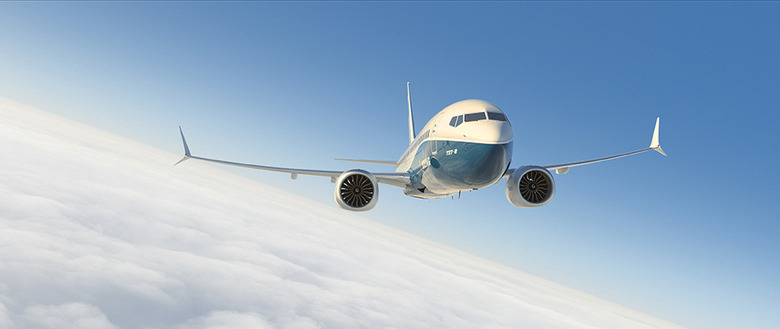A Key Boeing 737 Max Safety Option Will Now Reportedly Be Made Standard
Boeing will make a safety feature on the 737 Max standard rather than a paid upgrade, it's reported, after the technology's absence in both recent plane crashes prompted concerns that pilots could have been missing potentially vital information. The crashes in Ethiopia and Indonesia are still under investigation, but neither plane was equipped with two optional safety features that might have changed the course of the incidents.
Neither Lion Air Flight 610, which crashed in 2018, nor Ethiopian Airlines Flight 302, which crashed on March 10 of this year, had either the so-called angle of attack indicator or the disagree light, which Boeing sells as upgrades to airlines. The plane-maker does not make price lists for its options publicly available.
The causes of the two crashes, which both involved the Boeing 737 Max, are yet to be ascertained. Early attention, though, has been focused on one key difference between the 737 Max and earlier iterations of the aircraft. The Max variant has its engines mounted higher and further forward on the body of the plane, compared to earlier 737 planes, which can cause an upward pitching movement.
To deal with that, Boeing installed a new Maneuvering Characteristics Augmentation System, or MCAS. That automatically applies nose-down trim whenever the 737 Max is in a steep turn or in low-speed, flaps-retracted flight, to avoid it stalling. The system is designed to activate without giving notice to the pilot, should the angle of attack reach a certain threshold.

The programing of the MCAS has been questioned by some industry observers, and investigators are looking at whether its software could have been involved in the two crashes. If the data from the two sensors the MCAS relies upon is faulty, such as the sensors failing or other reasons, the system could activate when it's not actually required.
The two optional safety features give pilots greater insight into what those external sensors are saying. The angle of attack indicator, for example, offers the pilot a read-out of the data from each of the two sensors. The disagree light, meanwhile, illuminates should the data from the two sensors diverge.
Boeing, an insider tells the New York Times, plans to make the disagree light standard moving forward. The company will also update the MCAS software; the changes will include combining data from both sensors, rather than just one as was originally the case. However the angle of attack indicator will remain optional for airlines to add to their planes.
The decision brings into question which safety features are considered necessary by regulators, and which are not. Neither of the two options, for example, were required by the Federal Aviation Administration (FAA). In the US, American Airlines' current 24-strong 737 Max fleet all have both of the features.
Southwest Airlines, meanwhile, has 36 of the aircraft. The disagree alert option was added to all of them, the airline says it added an angle of attack indicator itself. The data from that is being moved to a more prominent position.
Finally, United Airlines says none of its 14 737 Max aircraft had the angle of attack indicators or the disagree light. The airline says its pilots rely on "other data to fly the plane," the NYTimes reports.
It's unclear when Boeing might announce the change in standard 737 Max equipment, or indeed when the planes themselves might be put back into service in the US. The FAA was slow to ground the aircraft, with Europe and other regions moving quickly to pull the model from service.
